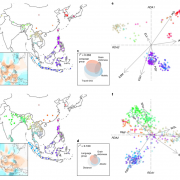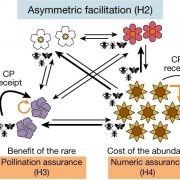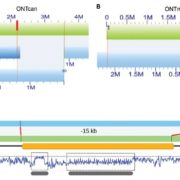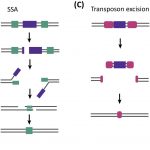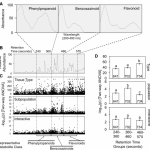Dramatic changes in repeat element content and gene family sizes underlie the high-altitude adaptation of rock-cress (PNAS)
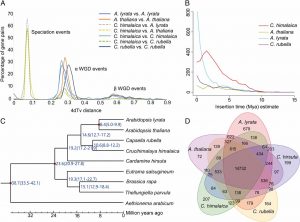 The ability to grow on the ‘roof of the world’ – the Qinghai-Tibet Plateau, makes Crucihimalaya himalaica (Rock-cress) an important model for studying adaptive evolution. A draft genome sequence of C. himalaica reported by Zhang et al. now provides clues to its speciation and ecological adaptation. About 45% of C. himalaica genome consists of transposable elements (TEs), which is ~1.5 times more than its close relative, Arabidopsis thaliana. Most of these TEs are LTR retrotransposons, whose proliferation coincides with the rapid elevation of the Qinghai-Tibet Plateau ~2 Mya. The authors concluded that expansion of LTRs, ubiquitin system- and DNA repair-related gene families, and reduction of disease and immune response-related gene families likely contributed to the adaption of C. himalaica to the strong UV radiation, low-pathogen and high altitude environment of the Himalayas. (Summary by Saima Shahid) PNAS 10.1073/pnas.1817580116.
The ability to grow on the ‘roof of the world’ – the Qinghai-Tibet Plateau, makes Crucihimalaya himalaica (Rock-cress) an important model for studying adaptive evolution. A draft genome sequence of C. himalaica reported by Zhang et al. now provides clues to its speciation and ecological adaptation. About 45% of C. himalaica genome consists of transposable elements (TEs), which is ~1.5 times more than its close relative, Arabidopsis thaliana. Most of these TEs are LTR retrotransposons, whose proliferation coincides with the rapid elevation of the Qinghai-Tibet Plateau ~2 Mya. The authors concluded that expansion of LTRs, ubiquitin system- and DNA repair-related gene families, and reduction of disease and immune response-related gene families likely contributed to the adaption of C. himalaica to the strong UV radiation, low-pathogen and high altitude environment of the Himalayas. (Summary by Saima Shahid) PNAS 10.1073/pnas.1817580116.



